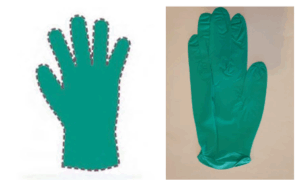The US Court of Appeals for the Federal Circuit affirmed the Trademark Trial & Appeal Board’s dismissal of a trademark opposition brought by a consumer, holding that mere consumer interest is insufficient to establish standing under Section 13 of the Lanham Act (15 U.S.C. § 1063). The ruling reinforced the application of the Supreme Court’s Lexmark (2014) framework to administrative trademark proceedings and clarified that only parties with commercial interest fall within the “zone of interests” protected by the statute when challenging a mark. Curtin v. United Trademark Holdings, Inc., Case No. 23-2140 (Fed. Cir. May 22, 2025) (Taranto, Hughes, JJ.; Barnett, Distr. J., sitting by designation.)
United Trademark Holdings (UTH) applied to register the mark RAPUNZEL for dolls and toy figures. Rebecca Curtin, a law professor, doll collector, and mother, opposed the registration, arguing that “Rapunzel” is a generic or descriptive term and its registration would harm consumers by reducing competition and increasing prices for fairytale-themed dolls.
The Board dismissed Curtin’s opposition, concluding she lacked standing to oppose under § 1063. The Board applied the Lexmark framework, which requires a showing that the opposer’s interests fall within the zone of interests protected by the statute and that the alleged injury is proximately caused by the registration. The Board found that Curtin, as a consumer, failed both prongs. Curtin appealed.
Curtin argued she had statutory entitlement under the 1999 Federal Circuit decision in Ritchie v. Simpson, “a case that addressed a section of the Trademark Act barring registration of ‘immoral’ or ‘scandalous’ matter.”
The Federal Circuit affirmed the Board, holding that the Lexmark framework applied rather than Ritchie. The Court explained that while the Lanham Act may indirectly benefit consumers, the statutory cause of action is reserved for those with commercial interest. Since Curtin’s opposition was based on claims that the mark was generic, descriptive, or failed to function as a mark, her interest as a consumer did not fall within the zone of interests protected by the statute.
The Federal Circuit also found that Curtin’s alleged injuries, namely reduced marketplace competition, increased prices, and diminished access to diverse interpretations of the Rapunzel character, were too speculative and derivative of harm that might be suffered by commercial competitors. The Court reiterated that injuries must be direct and not merely downstream effects of harm to others. Curtin’s submission of a petition with more than 400 signatures from like-minded consumers did not alter the Court’s conclusion that her alleged harm was too remote to satisfy the proximate cause requirement.
Practice Note: The Federal Circuit’s decision reinforces that only parties with direct commercial stakes, such as competitors or potential market entrants, have standing to oppose trademark registrations on grounds such as genericness, descriptiveness, or fraudulence.
read more

 Subscribe
Subscribe



